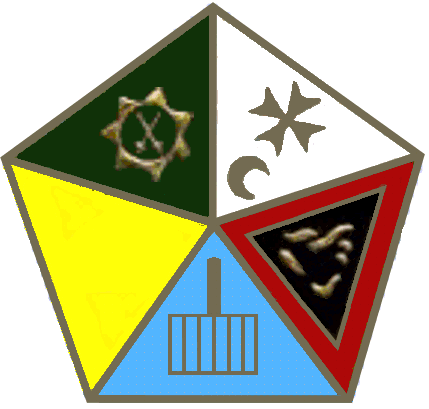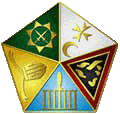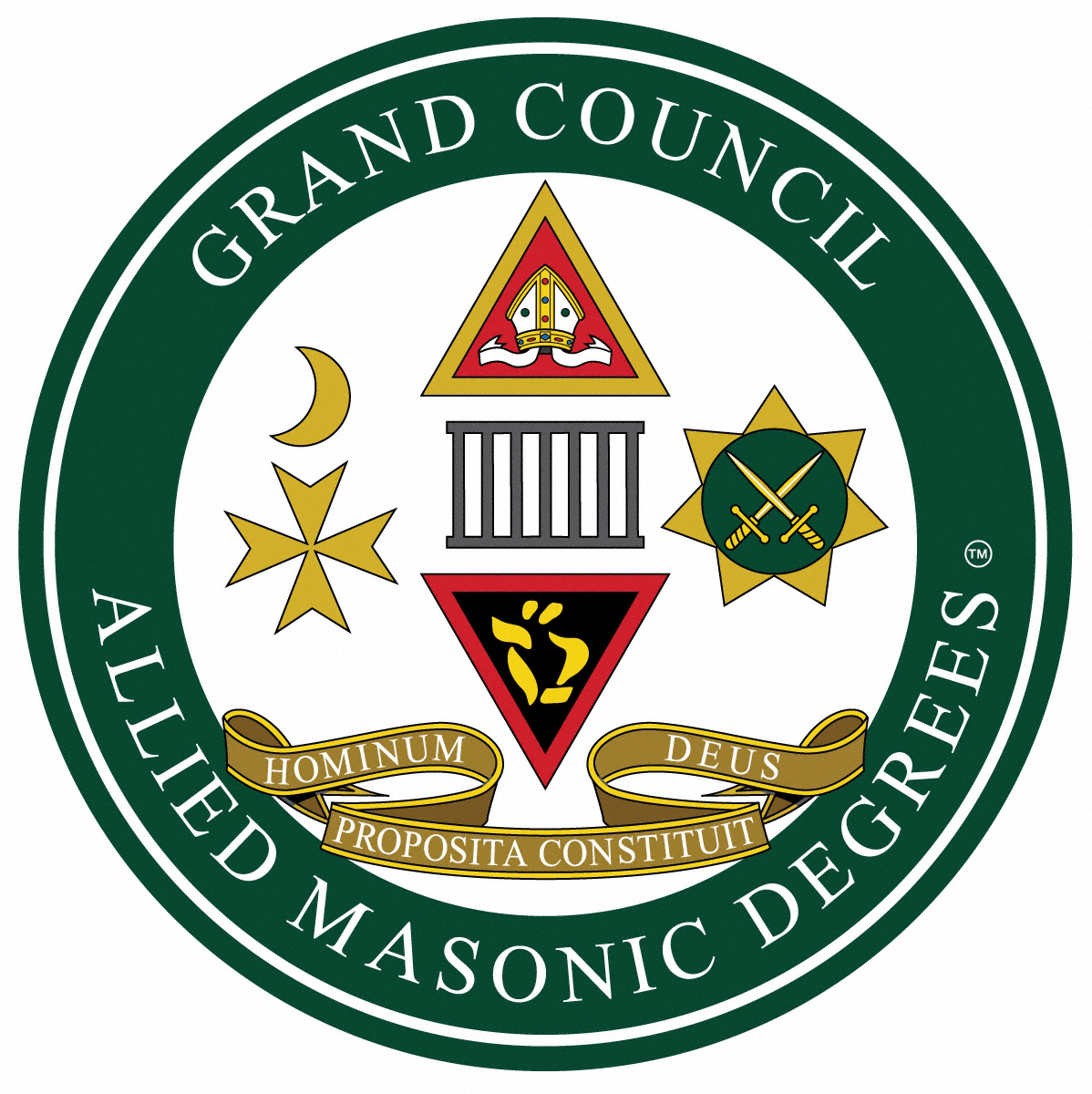History of the Allied Degrees |
| In the Nineteenth Century there were a number of degrees outside Craft Masonry worked by Lodges under warrants issued to them by the Antients, these were often known as additional or side degrees. Following the establishment of United Grand Lodge many degrees were grouped into various orders each with their own governing body. |
| However in the 1870’s there were a number of degrees in which no existing Grand Body had any interest that were being worked in various parts of the country. In order to prevent the wasting away of these historical degrees and to ensure the use of standardised rituals it was decided by the Grand Secretaries of the Craft, the Mark and the Grand Secretary General of the Ancient and Accepted Rite to form a “Grand Council of the Allied Masonic Degrees in England and Wales and the Colonies and Dependencies of the British Crown” based at Mark Masons Hall, London. |
| The Grand Council began to issue warrants in 1880, firstly as warrants of confirmation to existing lodges these being lettered rather than numbered. In this province Concord Council is a Time Immemorial Council and is Council F on the roll of Grand Council. The first warrant was issued to Portal Council on the 1/01/1880 which still meets to this day in Liverpool. Councils were warranted in Calcutta (1881), Brisbane (1900) and many areas of England and Wales. At this time there are approximately 130 active councils in England and Wales grouped into a number of Districts and 24 councils in other areas of the world under the government of this Grand Council. |
| Originally Councils were warranted to work four Orders, namely the Grand High Priest, St Lawrence the Martyr, the Red Cross of Babylon and the Knights of Constantinople. In 1893 the Order of the Grand Tilers of Solomon was added to the list. Other orders once under the governance of the Grand Council are now independent orders i.e. the Degree of Secret Monitor and the Order of Holy Wisdom otherwise known as the Holy Royal Arch Knight Templar Priests. |
| Each of the different degrees or orders have different morals and messages from which all mankind may learn. |
| Degree of St Lawrence the Martyr – This is based around the biblical depiction of the suffering and fortitude of St Lawrence and is the degree to which all candidates are admitted and all business of the Councils is conducted. The remaining four degrees may be taken over any timescale in any order and in any council. |
| Degree of the Knights of Constantinople – this relates to Constantine and is what was referred to as a “side degree” which would be conferred by a brother following a Craft Lodge meeting with a simple obligation and entrustment. Its origins are thought to lie in that period of transition from Operative to Speculative Masonry. |
| Degree of Grand Tilers of Solomon – this has similarities to the Cryptic Degree of Select Master and has been worked in the USA since1761. This degree inculcates the dangers of carelessness and haste and reinforces the importance of careful Tiling. |
| The Red Cross of Babylon – A degree of great antiquity much being condensed from degrees worked in the 18th Century. |
| The Holy Order of the Grand High Priest – this has been worked extensively throughout Lancashire and Yorkshire and it is strongly associated with Royal Arch Masonry. |
| Every Candidate must be a Mark Master Mason and a Companion of The Holy Royal Arch (Constitutions 1958) as the degrees worked today encompass and complete some of the explanations relating to those Degrees. |
| The District of West Lancashire currently has 13 Councils which are listed on the Councils Page together with their place and times of meeting. |
| It would be difficult to describe friendlier gatherings with much interest for those who like to observe or take part in ritual. |
The regalia is relatively simple, either a composite jewel (£20 or less) |
 |
or a more elaborate bar of individual miniature jewels (around £110) |
 |


